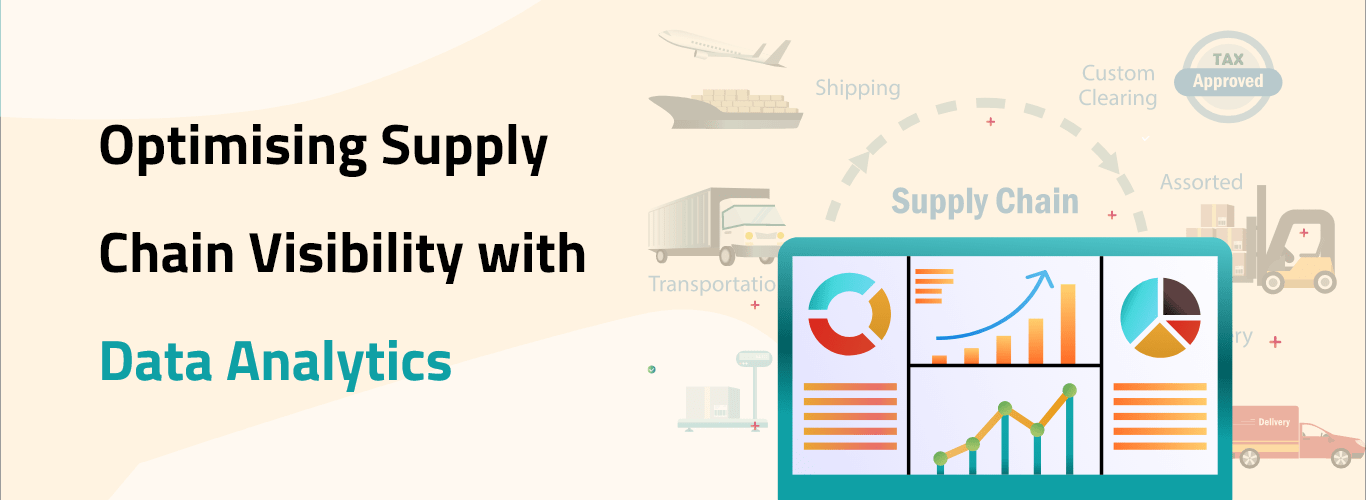Lorem ipsum dolor sit amet, consectetuer adipiscing elit, sed diam nonummy nibh euismod tincidunt ut laoreet dolore magna aliquam erat volutpat.

Supply chain visibility is essential for companies to efficiently manage their operations and reduce costs. With the help of data analytics, businesses can optimise supply chain visibility and make informed decisions to improve their overall performance.With the increasing complexity and globalisation of supply chains, supply chain visibility has become increasingly important for businesses to manage their operations effectively. By leveraging data analytics, businesses can gain insights into their supply chain operations and identify areas for improvement, such as reducing inventory costs, optimising transportation routes, and improving supplier performance. With improved visibility, businesses can make informed decisions that can help them reduce costs, improve efficiency, and enhance their overall performance.
Here are some ways in which data analytics can be used to optimise supply chain visibility:
Predictive analytics can be used to identify patterns and predict future events. By analysing historical data, businesses can forecast demand, identify potential bottlenecks, and plan accordingly. This helps companies to optimise their inventory levels and avoid stock-outs or excess inventory.Predictive analytics is a powerful tool for businesses to forecast demand and identify potential bottlenecks in the supply chain. By analysing historical data, businesses can identify patterns and trends that can help them predict future events, such as changes in demand, supply chain disruptions, or potential stockouts.
Real-time monitoring can be used to track inventory levels, delivery times, and other key metrics. This helps businesses to quickly identify issues and take corrective actions in real-time. By using real-time monitoring, companies can minimise delays and reduce the risk of stock-outs.Real-time monitoring is a valuable tool for businesses to track and analyse data in real-time, allowing them to respond quickly to any issues or changes.
Data integration is the process of combining data from multiple sources to provide a holistic view of the supply chain. This helps businesses to identify the root cause of issues and take corrective actions. By integrating data from suppliers, logistics providers, and internal systems, companies can gain greater visibility into their supply chain.
Data visualisation is the process of presenting data in a graphical format to facilitate analysis and decision-making. By using data visualisation tools, companies can identify trends, patterns, and outliers. This helps businesses to quickly identify issues and take corrective actions.Data visualisation is an important tool for businesses to gain insights from their data, communicate those insights to stakeholders, and make informed decisions based on the information at hand.
Machine learning algorithms can be used to analyse large volumes of data and identify hidden patterns. By using machine learning, companies can identify the most important factors that impact their supply chain performance. This helps businesses to optimise their operations and reduce costs.Machine learning is used in a variety of applications, including natural language processing, image and speech recognition, predictive analytics, and autonomous vehicles. It is also used in business applications, such as fraud detection, recommendation systems, and customer segmentation.
Data analytics can be used to optimise supply chain operations, reducing costs and improving efficiency. By analysing data on supplier performance, transportation costs, and inventory levels, businesses can identify inefficiencies and take steps to improve performance.supply chain optimization can help companies to achieve greater efficiency, reduce costs, and improve customer satisfaction, all of which can lead to a competitive advantage in the marketplace.
Data analytics can be used to improve collaboration between supply chain partners. By sharing data with suppliers and logistics partners, businesses can improve communication and collaboration, enabling them to work together to optimise supply chain operations.
Data analytics can help businesses optimise their supply chain visibility by providing insights into their operations. By leveraging predictive analytics, real-time monitoring, data integration, data visualisation, and machine learning, companies can make informed decisions and improve their overall performance.
Data integration can help companies combine data from multiple sources, such as suppliers, logistics providers, and internal systems, to gain a more comprehensive view of their operations. Data visualisation can help businesses quickly identify trends and patterns in their data, allowing them to make informed decisions quickly. With the help of logix platform machine learning can help companies identify new opportunities for optimization and automate certain supply chain processes.